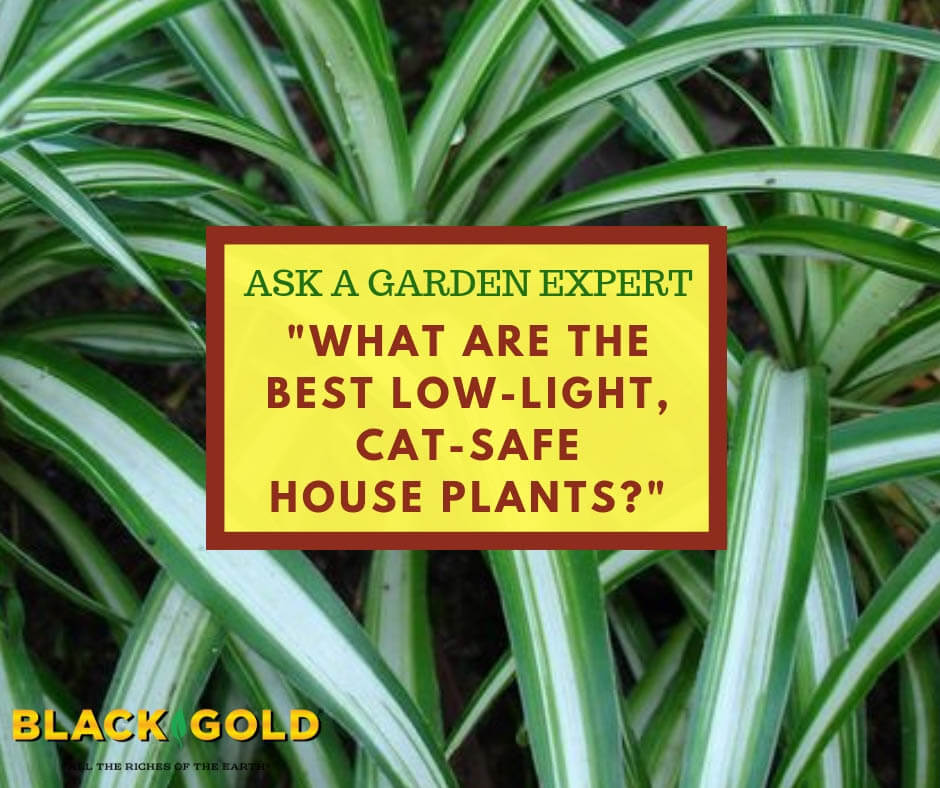“What are the best low-light house plants that are cat safe?” Question from Margaret of Houston, Texas
Each of these eight beautiful house plants grow well in shade or filtered sunlight, and according to the ASPCA, all are non-toxic to cats.
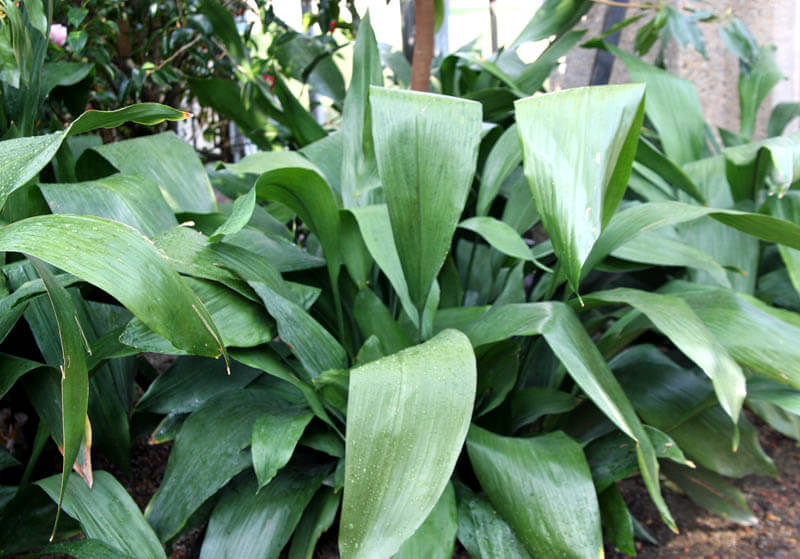
Non-Toxic House Plants for Cats
Cast Iron Plant (Aspidistra elatior, full to part shade, 1-3 feet): This bold-leaved house plant needs average water and fertile soil. Some varieties have gold or variegated leaves.
Rex Begonia (Begonia rex-cultorum, part shade, 1-2 feet): Grown for their fantastic leaves and flowers, these are some of the prettiest houseplants that are cat safe.
Parlor Palm (Chamaedorea elegans, full to part shade, 2-6 feet): The classic parlor palm, with its deep green palm leaves, looks great indoors and is safe for all pets.
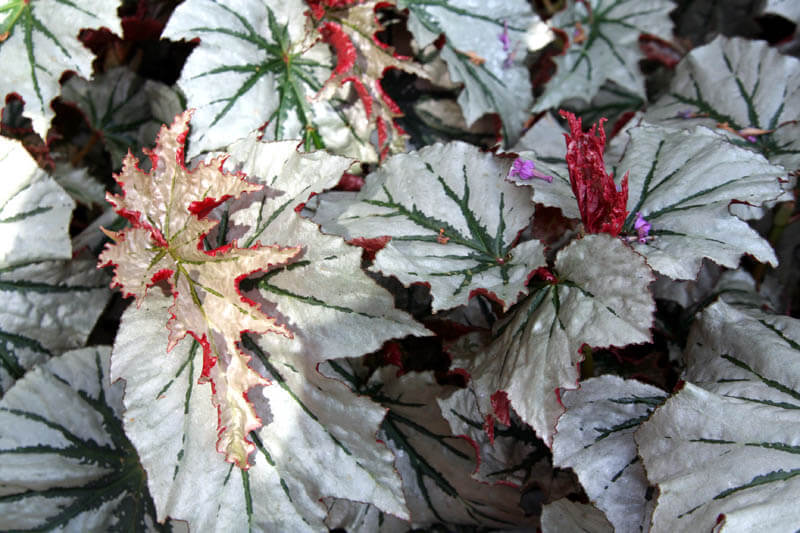
Spider Plant (Chlorophytum comosum, full to part shade, 1-2 feet (cascading)): The classic spider plant is safely chewed upon by cats like cat grass and is very easy to grow.
False Aralia (Schefflera elegantissima, part shade, 5-10 feet (indoors)): False aralia has beautiful foliage and is very easy to grow in partially shaded areas.
Boston Fern (Nephrolepis exaltata, part shade, 2-3 feet): Common Boston ferns are lovely, safe, and always pretty in low-light spots in the home. Just be sure to water them regularly and remove old, browning fronds.
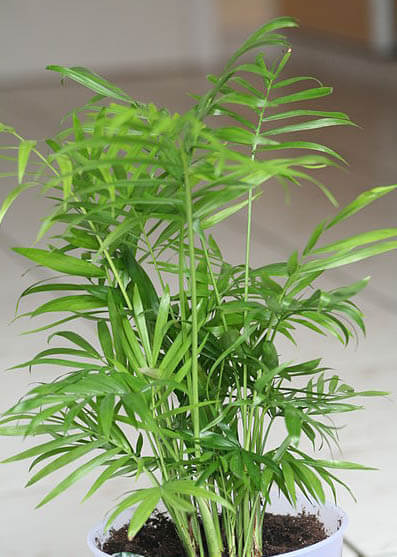
Emerald Ripple Peperomia (Peperomia caperata, part shade, 6-10 inches): The corrugated leaves of this compact house plant always look pretty and won’t pose a threat to cats.
Silverleaf Peperomia (Peperomia griseoargentea, part shade, 6-18 inches): This peperomia has silvery, textural leaves that glow in partial shade locations in the home.
House Plant Care
All of these house plants will thrive in Black Gold All-Purpose Potting Mix, which is specially formulated for indoor growing. Choose a planting pot that is just larger than the root ball of your house plant, and leave at least 2-3 inches of space at the top for watering.
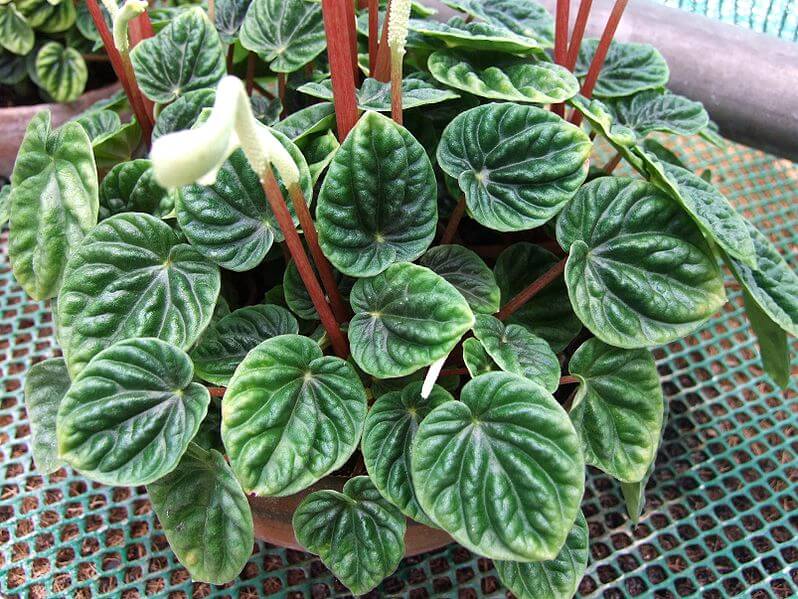
Water plants regularly. Feel the soil down to your middle knuckle, and if it’s dry, it’s time to water. Less water is generally needed during the cold winter months. House plants also grow better if fed with a quality fertilizer formulated for house plants.
Be sure to place house plants away from heating vents, as this causes their leaves and soil to dry more quickly. It is also wise to clean the leaves of house plants to remove dust that can inhibit growth. This is especially necessary for larger-leaved specimens that readily collect dust.


